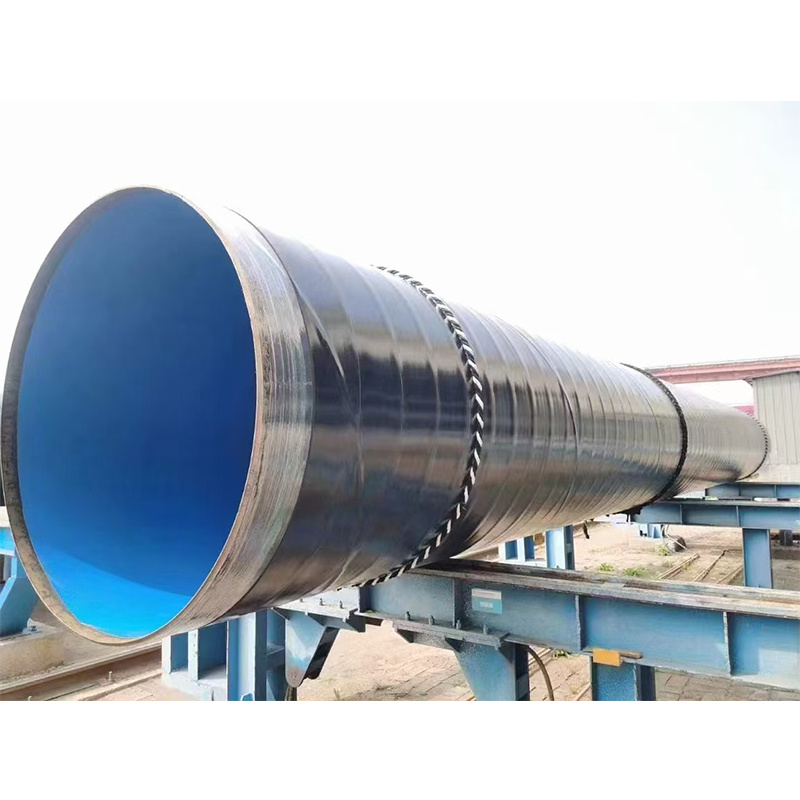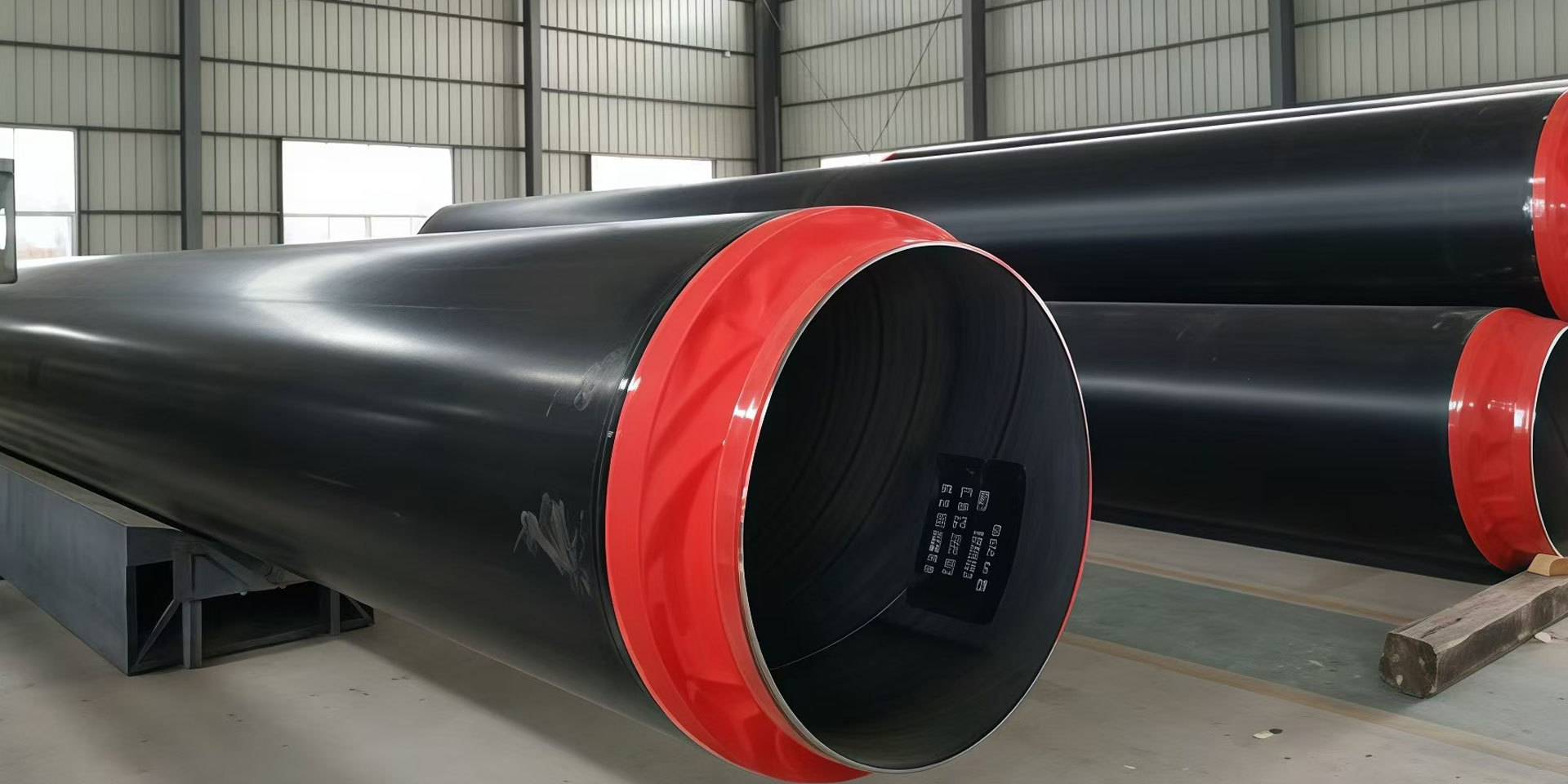Understanding the Benefits of Using Steel Pipes with Insulation Layers
Jun 18,2025
Understanding the Benefits of Using Steel Pipes with Insulation Layers
Table of Contents
Introduction to Steel Pipes with Insulation
Maximizing Thermal Efficiency
Achieving Significant Energy Savings
Corrosion Resistance: A Key Benefit
Enhancing Sound Insulation Properties
Streamlined Installation Advantages
Reducing Environmental Impact
Cost-Effectiveness of I

Understanding the Benefits of Using Steel Pipes with Insulation Layers
Table of Contents
- Introduction to Steel Pipes with Insulation
- Maximizing Thermal Efficiency
- Achieving Significant Energy Savings
- Corrosion Resistance: A Key Benefit
- Enhancing Sound Insulation Properties
- Streamlined Installation Advantages
- Reducing Environmental Impact
- Cost-Effectiveness of Insulated Steel Pipes
- Conclusion
- Frequently Asked Questions
Introduction to Steel Pipes with Insulation
In the realm of construction and decoration materials, **steel pipes with insulation layers** have emerged as a favored choice for architects and builders alike. These pipes combine the durability of steel with the superior insulating properties of various materials, resulting in a product that meets the demands of modern infrastructure. Understanding the benefits of using insulated steel pipes is crucial for making informed decisions in construction projects.
Maximizing Thermal Efficiency
One of the most significant advantages of insulated steel pipes is their ability to maximize thermal efficiency. In buildings and industrial settings, heat loss and gain are critical factors that affect energy consumption and comfort levels. By incorporating insulation layers, these pipes dramatically reduce thermal conductivity.
**Research shows** that insulated steel pipes can maintain the desired temperature of fluids more effectively than uninsulated alternatives. This characteristic not only enhances **energy efficiency** but also contributes to better overall climate control within the building. Achieving optimal thermal efficiency through steel piping systems can lead to more comfortable environments while minimizing energy waste.
Types of Insulation Materials
Different insulation materials can be utilized to enhance the thermal efficiency of steel pipes, including:
- **Polyurethane Foam**: Known for its high R-value, polyurethane foam is an excellent choice for thermal insulation.
- **Fiberglass**: A common option due to its cost-effectiveness and good insulating properties.
- **Mineral Wool**: Provides fire resistance along with thermal insulation, making it suitable for high-temperature applications.
Selecting the appropriate insulation material depends on factors such as the application, environmental conditions, and budget considerations.
Achieving Significant Energy Savings
By reducing heat transfer, insulated steel pipes contribute significantly to **energy savings** in both commercial and residential buildings. According to studies, buildings equipped with insulated piping systems can experience energy savings of up to **30%** when compared to systems using uninsulated pipes.
The financial benefits are twofold: not only do insulated pipes lower energy bills, but they also reduce the burden on heating and cooling systems. This leads to a longer lifespan for HVAC equipment and decreased maintenance costs, thereby yielding substantial savings over time.
Regulatory Compliance and Incentives
Many regions have regulatory standards aimed at improving energy efficiency in buildings. The integration of insulated steel pipes can assist in achieving compliance with these regulations, potentially opening the door to **government incentives** or rebates. Builders and homeowners might benefit from tax reductions or financial credits for utilizing energy-efficient materials.
Corrosion Resistance: A Key Benefit
Corrosion can significantly compromise the integrity of piping systems, leading to leaks and structural failures. Insulated steel pipes often come with additional protective coatings that enhance their **corrosion resistance**. This characteristic is particularly valuable in environments where moisture, chemicals, or extreme temperatures could accelerate corrosion processes.
Moreover, the insulation itself can provide a barrier against moisture, further protecting the steel from corrosive elements. This extends the lifespan of the pipes, providing long-term value and reducing the need for frequent replacements.
Common Coatings for Corrosion Resistance
To bolster corrosion resistance, several coatings can be applied to steel pipes:
- **Galvanizing**: Zinc coating provides a robust barrier against rusting.
- **Epoxy Coatings**: These coatings offer excellent chemical resistance and can withstand harsh environments.
- **Polyurethane Coatings**: Known for their durability, these coatings are effective against both physical and chemical attacks.
Choosing the right coating not only protects against corrosion but also enhances the pipe's overall performance.
Enhancing Sound Insulation Properties
Insulated steel pipes don't just serve thermal purposes; they also provide effective **sound insulation**. In environments where noise control is paramount—such as hospitals, schools, and residential buildings—insulated piping systems can help reduce sound transmission.
The insulation layer absorbs sound vibrations, resulting in quieter indoor environments. This is particularly advantageous in multi-family dwellings where sound privacy is essential for resident comfort.
Streamlined Installation Advantages
The installation of insulated steel pipes can be more **streamlined** compared to traditional piping systems. The pre-insulated options reduce the need for on-site insulation work, thereby speeding up the installation process.
Additionally, the lightweight nature of certain insulated pipe systems makes handling and maneuvering easier, minimizing labor costs and time. Contractors often find that the simplified installation of insulated pipes leads to higher efficiency in project timelines.
Modular Options
Many manufacturers offer modular insulated steel pipe systems, allowing for quick assembly and customization. This modularity means that pipes can be tailored to fit specific project requirements without compromising insulation performance.
Reducing Environmental Impact
In today's eco-conscious world, the environmental impact of building materials is a significant consideration. Insulated steel pipes contribute to sustainability efforts in several ways:
- **Energy Efficiency**: As previously discussed, energy-efficient systems help reduce greenhouse gas emissions associated with energy consumption.
- **Longevity**: The durability of steel combined with insulation reduces the frequency of replacements, minimizing waste.
- **Recyclability**: Steel is a highly recyclable material, meaning that insulated steel pipes can contribute to a circular economy when they reach the end of their lifespan.
By choosing insulated steel pipes, builders and contractors can align their projects with sustainable practices, appealing to environmentally conscious clients.
Cost-Effectiveness of Insulated Steel Pipes
While the initial investment in insulated steel pipes may be higher than traditional piping systems, the long-term benefits often outweigh these upfront costs. The **cost-effectiveness** of insulated pipes can be attributed to several factors:
- **Lower Energy Bills**: Reduced energy consumption leads to significant cost savings over time.
- **Reduced Maintenance Costs**: Enhanced durability and corrosion resistance mean fewer repairs and replacements.
- **Regulatory Compliance**: Meeting energy efficiency standards can lead to financial incentives, further offsetting costs.
In summary, the lifecycle cost of insulated steel pipes often results in a favorable return on investment, making them a wise choice for any construction project.
Conclusion
The integration of **steel pipes with insulation layers** presents a multitude of benefits that elevate their status as a premier choice in the construction and decoration industry. From maximizing thermal efficiency and achieving significant energy savings to providing substantial corrosion resistance and sound insulation properties, the advantages are clear. By opting for insulated steel pipes, builders not only enhance the performance of their projects but also contribute to sustainability efforts and long-term cost savings. As the construction landscape continues to evolve, insulated steel pipes stand out as a solution that aligns with modern demands for efficiency, durability, and environmental responsibility.
Frequently Asked Questions
1. What types of insulation are commonly used with steel pipes?
Common insulation materials include polyurethane foam, fiberglass, and mineral wool, each offering unique thermal properties.
2. How do insulated steel pipes contribute to energy savings?
Insulated steel pipes reduce heat loss and gain, leading to lower energy consumption and decreased heating and cooling costs.
3. Are insulated steel pipes more expensive than traditional pipes?
While they may have a higher initial cost, insulated steel pipes often provide long-term savings through energy efficiency and reduced maintenance.
4. Can insulated steel pipes be used in outdoor applications?
Yes, insulated steel pipes are suitable for outdoor applications, especially when protective coatings are applied to prevent corrosion.
5. How do insulated pipes improve sound insulation in buildings?
The insulation layer absorbs sound vibrations, reducing noise transmission and creating quieter indoor environments.
TAG:
Related Posts
How Customized API 5L 3PE Coated Pipes Enhance Construction Durability
How Customized API 5L 3PE Coated Pipes Enhance Construction Durability
Table of Contents
Introduction to API 5L 3PE Coated Pipes
What Are API 5L 3PE Coated Pipes?
Benefits of Customization in API 5L 3PE Coated Pipes
How 3PE Coating Works to Enhance Durability
Applications of API 5L 3PE Coated Pipes in Construction
Sustainability and Environmental Impact of API 5L 3PE Coate










